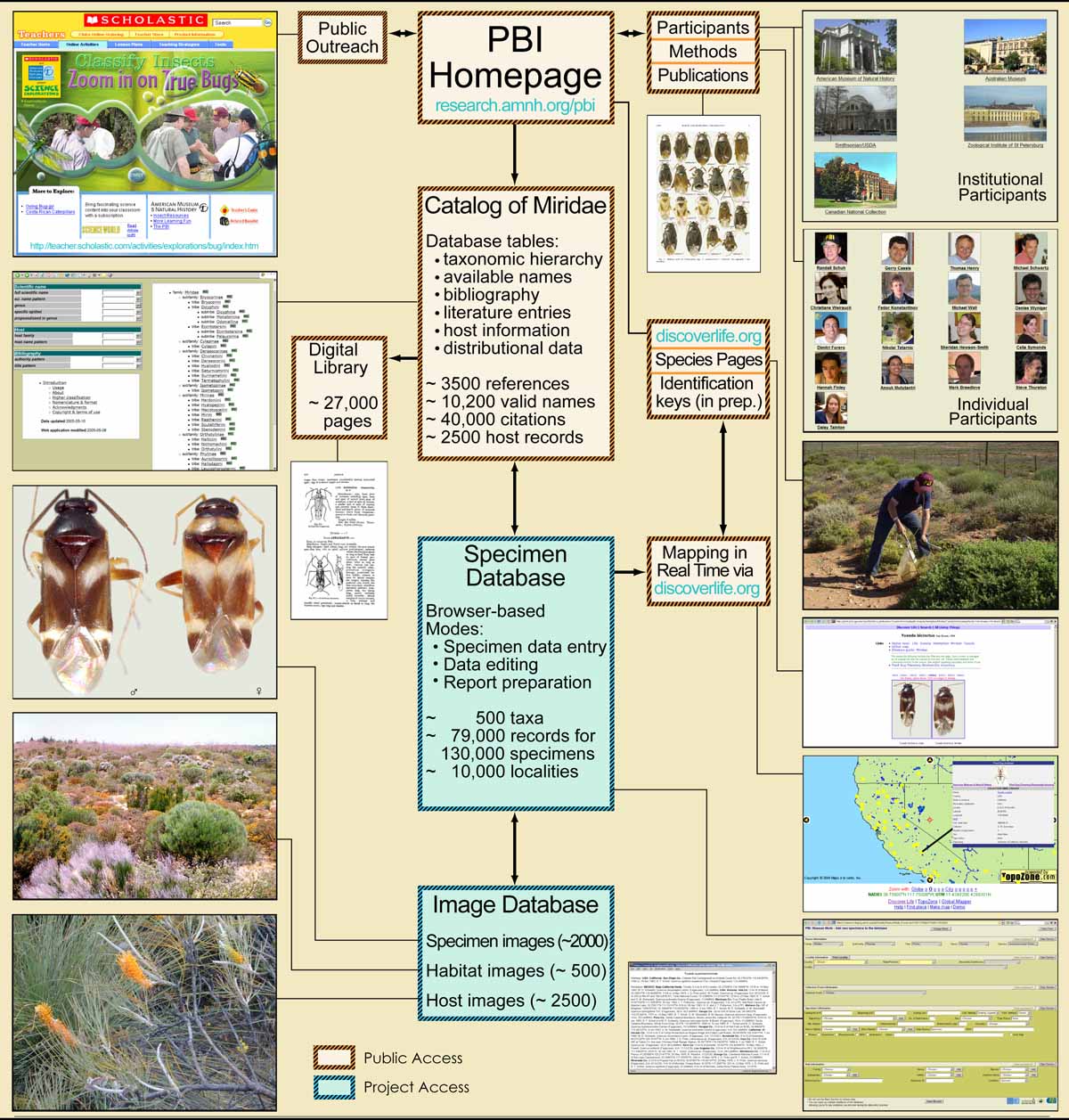Summary of the Plant Bug Planetary Biodiversity Inventory Project

A global study of the plant bug subfamilies Orthotylinae and Phylinae (Insecta: Heteroptera: Miridae) will bring together biodiversity information on two closely related world-wide groups of phytophagous insects. Materials for the project will consist of approximately 550,000 specimens currently lodged in museums around the world and an additional 100,000 or more specimens acquired through field work. Collection of new material will be focused heavily on the southern hemisphere, the area of greatest taxonomic impediment. Specimens studied will represent an estimated 5350 species placed in 575 genera. Nearly 25 percent of the species will be described as new, with about 800 coming from Australia, which has a large fauna but is nonetheless the most poorly know region in the world. Preparation of a generic-level phylogenetic scheme for the Orthotylinae and Phylinae will place these groups among a very small number of taxa of such great diversity for which world-wide studies are available and for which phylogenetic schemes exists.
The project will produce insights into evolutionary phenomena which can be tested through the use of phylogenetic information. Most species of Orthotylinae and Phylinae are host specific. This study will increase the number of known hosts by an estimated 100 percent to approximately 6000 and the number of bugs species with known hosts to more than 4000. With this large body of information, theories of host association can be tested, with the aim of understanding whether bugs have co-evolved with their hosts, whether host affiliation is the result of ecological association, or whether the evolution of host associations is driven by the existence of plant secondary-chemical compounds.
At least 7 lineages of Orthotylinae and Phylinae are ant-mimetic. The results of this study will allow for tests of mimicry theories within the Miridae, and to assess whether the primary operators in differ mimetic lineages are the same or different. The systematic and distributional information derived from this study will further allow for tests of theories in historical biogeography as well as biodiversity hotspot theory, both essential elements in all efforts to conserve what still remains of the world biota.
The broader impacts of this study will be extensive and varied. International partnerships will develop through the inclusion of senior investigators from the USA, Canada, Japan, and Australia; postdoctoral investigators will add Germany and Russia to the list. Additional infrastructure development will result from creation of a massive locality database and extensive collection development from still poorly sampled areas.
Six PhD candidates and 3 postdoctoral investigators, including at least one woman, will be trained in techniques relevant to systematic biology in the 21st Century . Each of these individuals will receive substantial international exposure through field work, in museums, and at professional meetings. Furthermore, all of them will receive intensive training in the study of Heteroptera and the preparation of technical publications, while PhD candidates will also complete other academic requirements. At least 3 minority undergraduate students will be involved, learning techniques, acquiring data critical to project success, and being exposed to the research environment.
Scientific results will be disseminated through a project website with broad functionality, including interactive mapping of distributions, interactive identification keys, and links to botanical websites. Results of general interest will be published in journals of broad readership. New names will be documented through publication in appropriate journals.
Project results and concepts will be made available to the general public via a traveling exhibit to be shown at participating institutions. In conjunction with creation of the exhibit, specialized web materials, with the potential for use as educational aids, will be developed.



